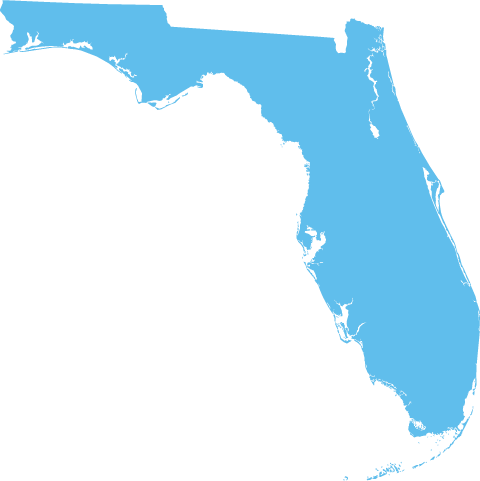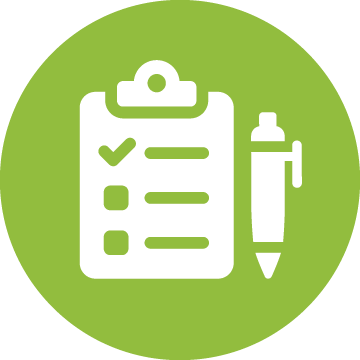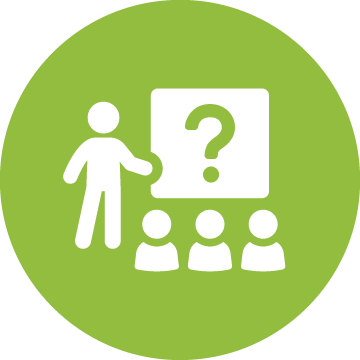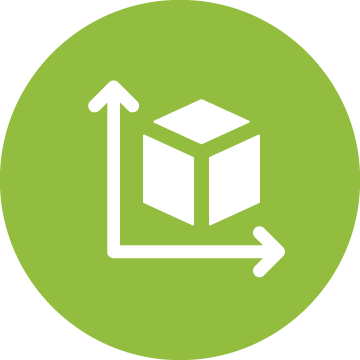State of the Student 2025
Math is a Solvable Equation



“When students experience math in the way we know is possible … their interest, motivation, and persistence are evident. That is the math classroom we want all students to find themselves in.”
Bob Hughes, director of K-12 education in the U.S. Program, The Gates Foundation, in “The Math Classroom All Students Deserve”

The crisis in math learning is real and urgent. But it is also solvable.
Math may be one of the most tractable challenges in American education. Unlike other crises driven by social forces outside schools’ control, math performance is highly sensitive to what happens inside classrooms: the quality of instruction, the depth of teacher knowledge, and the availability of timely support.
That’s what makes this moment both a warning and an opportunity. It should be heartening for educators, parents, advocates, and policymakers to know that with the right instructional pieces in place, schools can have an outsized role in turning the math achievement tide.
Imagine a world where there are no dead ends. Schools are committed to diagnosing students’ needs and have systems in place to close gaps. Elementary and middle schools address missing skills as soon as they are apparent, and use a combination of small-group instruction and AI tutoring to address them. Students—and their families—know exactly what they still need to learn and have what they need to stay on track. No student arrives in Algebra I doomed to fail. Even if they do struggle initially, they still have boundless opportunities to succeed. They’re immediately placed with a small group of students on their level and receive targeted interventions to solidify their skills and demonstrate why math matters in the world they know and the world they’ll inherit. Every student graduates with the foundational math skills and confidence they need to adapt to a changing economy, to keep themselves and their families secure, and to make sense of the issues that affect them as democratic citizens.
This vision is at once obvious and radical. If we want American students to regain confidence and competence in math—and to compete globally in the decades ahead—we need a nationwide commitment to reimagining how we teach, support, and believe in math learning. Some states, districts, and schools are showing what making that commitment can deliver.

The Proofs

Alabama’s State Wide Commitment to Math Improvement
Alabama has outperformed every other state in fourth-grade math growth since 2019
The state performs highest in the nation when NAEP scores are adjusted to compare students with similar demographic traits
Alabama is one of the only states where fourth-grade math achievement on the NAEP has improved since the pandemic. Over the past five years, the state has dedicated more than half a billion dollars to both math and reading improvement. The investments will be ongoing, thanks to increased spending for math and literacy reforms in a budget passed earlier this year with historic increases to education funding. There is more work to do, especially to improve eighth-grade math achievement and close the gap between high and low performers. And because Alabama has historically struggled with achievement, simply getting the basics right—like consistent instructional delivery—can drive noticeable gains. But the statewide commitment to improvement, along with proof points from districts combining multiple reforms, demonstrates that progress is possible. Specific bright spots include two rural districts, DeKalb County and Piedmont City, where more than 70% of the students are considered low-income.
“We made a total transformation about five years ago. We decided that we were going to let data make every decision.”
Piedmont County School District Superintendent Mike Hayes (via WSFA)
DeKalb County
In DeKalb County (8,300 students), Superintendent Wayne Lyles has led the district in adopting key reforms, including high standards and high-quality curriculum, intensive use of data to help target instruction and provide accountability, and increased support for teachers. The district used Covid relief funding to hire Julie West, an educator and principal who grew up in the county, to lead a math makeover in elementary schools. “Data or it didn’t happen,” West is fond of saying. “Don’t tell me you did something unless you have the proof that you did it.” The district’s elementary math and special education teachers have all received foundational math training through a state program, and secondary math and science teachers can receive higher pay for participation in the same program. The district has increased teachers’ collaborative planning time and uses “learning rounds” that give teachers a chance to observe their colleagues. A key part of DeKalb’s math success is following instructional best practices, like broader use of manipulatives (foam blocks, rainbow-colored measuring sticks, etc.) to make complex math concepts more concrete and increase arithmetic fluency for younger students.
Piedmont City
Piedmont City (1,100 students) is using many similar strategies, notably the extensive use of data to drive instructional decisions, systematic and explicit instruction, and the use of small groups to target interventions. A longer school year allows educators to engage in “data days” every four weeks, when they get together to analyze the numbers. Longer math classes (120 minutes each, up from about 50) give elementary students more time on task.
In 2022, the state passed the Alabama Numeracy Act to encourage other districts to undertake similar reforms. This act provides more support to elementary school teachers, including high-quality curriculum, additional coaches, and extensive training—all paid for with increased funding.


Outcomes-based tutoring and workforce investments in Ector County, Texas
Teacher vacancies reduced from 350 in 2019 to 29 in 2024
Grades 3–8 math performance in 2024 returned to 2013 levels, reversing a steep plunge that reached its lowest point in 2016
“Boosting student achievement starts with equipping and supporting teachers. Incentivizing the best teachers to work in our lowest-performing schools allowed us to put the most-qualified teachers in front of the students in most need of support.”
Superintendent Emeritus Scott Muri (via Education Recovery Scorecard)
In Odessa, Texas, Ector County ISD (34,000 students) combined results-based tutoring with teacher workforce investments to address low performance and a significant staffing shortage. The district tackled multiple challenges at once instead of separately, and was able to turn around after being on the verge of a state takeover in 2019.
During the pandemic, 6,000 of the district’s 34,000 students—the majority of whom are low-income—received 1:1 tutoring, which tied payments to student growth, creating real accountability for providers and aligning incentives with outcomes.
To address teacher shortages, the district introduced several bold new initiatives with financial bonuses (supported by state funding) and leadership opportunities for teachers. For example, outstanding teachers could become “master teachers” and receive a pay boost for splitting their time between teaching and mentoring new teachers. Highly qualified teachers were compensated for working in the lowest-performing schools. Partnerships with local colleges and universities strengthened preparation pipelines, including a one-year residency and a principal apprenticeship.

What Washington DC’s most-improved schools reveal about math success
40 schools in Washington, DC show exceptional math growth. Students improved by an average of 23 percentage points on the state assessment in one year
In grades K–2 at these schools, the share of economically disadvantaged students on grade level in math rose 18 points to 68%
While just 22% of DC students met grade-level expectations in math in 2023, analysis from EmpowerK12 showed that 40 public and charter schools in the district are achieving growth that far exceeds citywide trends, particularly for economically disadvantaged students. These “bright spots” share common practices that can inform broader policy and system investment.
In a 2024 survey, DC Public Schools parents ranked math as the most important subject their children take. These schools are early proof points for what systemic improvement in the district can look like when strong instructional practices are sustained and supported.
What’s working in these schools?
They maximize instructional time...
…by structuring math blocks to include daily data-driven intervention. Schools like KIPP DC Promise use “double blocking,” allowing teachers to reteach concepts immediately based on quick daily assessments at the end of each lesson.
They invest in instructional coherence...
…using high-quality instructional materials paired with weekly collaborative planning and embedded coaching. For example, Center City PCS integrates real-time assessment with structured professional development, supporting teachers to balance conceptual understanding with procedural fluency.
They cultivate math confidence...
…and celebrate mistakes as learning opportunities. Combined with high-quality instruction and materials, this mindset work helps students see themselves as capable math thinkers.
They engage families...
…as partners in math learning, offering suggestions for home-based math practice and family math nights where parents and students can experience how math is taught together.

Coaching, data, and daily learning objectives boost math outcomes at Albuquerque Collegiate Charter School
In 2022–23, the school’s math proficiency outpaced the state average (31% vs. 24%)
Since pandemic school closures, the percentage of fourth and fifth graders on grade level in math has increased from 24% to 70%
After the Covid-19 pandemic, Albuquerque Collegiate Charter School saw a troubling math gap: while the school prioritized reading support, math instruction fell behind. By third grade, many students lacked basic number sense. At the same time, many elementary school teachers lacked confidence in teaching math.
The school responded with a systemwide approach to math acceleration grounded in data, coaching, and curriculum. Every teacher is paired with a coach in frequent data meetings to review student progress and adjust instruction in real time. Teachers also receive intensive support: three weeks of summer training, weekly professional development, eight data days, and weekly coaching and observations. The school redesigned its math curriculum to emphasize daily learning objectives and use exit tickets to plan interventions when students aren’t grasping key skills. Upper elementary teachers became math content specialists, with more time to improve their expertise and share with other teachers.


Strong leadership and smart investments boost achievement for English learners in Union City
Math achievement has recovered to pre-pandemic levels
Union City Public Schools in New Jersey (13,000 students), a majority Spanish-speaking district (95% Hispanic; 35% English learners), has become a model of improvement through evidence-based instruction, strong leadership, and investments in bilingual and early childhood education. Slated for state takeover in 1989, the district is now ranked third in New Jersey for performance among high-needs districts and graduates more than 90% of its students. Reading performance in grades 3–8 has improved steadily since 2014, while math achievement has recovered to pre-pandemic levels.
The district has used several strategies:
- In 2022, it used state grants to launch high-impact, small-group tutoring by its teachers rather than outside vendors.
- District leadership provides targeted support for struggling schools, including frequent site visits, while central office staff are assigned to specific schools and sometimes specific grade levels, giving them greater insight and involvement in decision-making.
- With 75% of students speaking Spanish at home, the district pays for select teachers to receive bilingual/English as a Second Language (ESL) certification and offers an extra ESL class period to students.
- Since 1989, the district has offered a high-quality curriculum to private early learner centers, which has helped boost subsequent elementary school achievement.
The Frazer School’s team-based math success
In just a few years, the independent Frazer School in Gainesville, Florida, has shown how a commitment to a coherent schoolwide approach—team-based competition—can drive academic excellence. Founded by legendary math coach Will Frazer, who led the Buchholz High math team to 16 national titles, the school builds its culture around collaboration, mentorship, and rigorous challenge. Every student joins at least one academic team. In math, this approach is already yielding extraordinary results: Frazer’s middle schoolers dominated Florida’s MATHCOUNTS competition with five students in the countdown round. In addition, the high school team claimed the 2025 Mu Alpha Theta national title.
But beyond trophies, the school’s core innovation is cultural—older students coach younger peers, everyone is invested in the team’s success, and learning becomes joyful, collaborative, and purposeful. Whether or not the Frazer School’s approach is right for other schools to adopt, its results show what’s possible when academic challenge is not just encouraged, but institutionalized in a coherent schoolwide model.
The high school team claimed the 2025 Mu Alpha Theta national title
Older students coach younger peers, everyone is invested in the team’s success


The Formula:
States cannot buy or mandate their way out of the math crisis.
There is no secret solution hidden in one program or curriculum. The roots of the problem are complex, and the solutions must be comprehensive. Isolated interventions won’t succeed. Instead, progress depends on building a coherent system in which multiple strategies work together. Weakness in one area can undermine the rest.
We’ve identified five mutually reinforcing solutions. Each is essential—and together, they form a powerful formula for change.
The system we have

A leaky pipeline to math success that limits students’ potential as they progress through school

Ideological math wars are weakening instruction

School systems have lowered expectations and weakened accountability

Students have declining access to qualified math teachers

A rigid and outdated delivery system incapable of supporting growing learner variability

Mutually Enforcing Solutions

Evidence-Based Instruction That Meets Individual Needs. Every student deserves high-quality, explicit instruction grounded in what works. Teachers need clear guidance on balancing conceptual understanding with procedural fluency. They also need real-time data to identify gaps and target instruction. Practices that aren’t backed by evidence should be left behind.

High Expectations and Transparent Accountability. States must recommit to preparing all students for success in algebra and beyond. That starts with setting meaningful standards and giving families clear, actionable information about student progress. Schools falling short should be required to adopt evidence-based curricula and supports like explicit instruction and targeted tutoring.

Creative Models to Address the Math Teacher Shortage. Math learning depends on access to qualified teachers. To attract and retain strong math educators, states should explore bold strategies: differentiated pay, team-teaching models, math specialists, and smarter deployment of existing talent. The goal isn’t just more teachers, but the right people in the right roles.

A New Delivery System without “Dead Ends.” The current model—especially for zstudents with missing skills or special education needs—isn’t working. We need flexible pathways with multiple on-ramps, automatic acceleration, and no lower-track “dead ends.” Students should be able to advance as soon as they’re ready. That means rethinking everything from course structures to assessments and professional development so the whole system works in sync.

Engagement That Lasts. Students need to believe that math matters and that they can succeed. Real-world applications can help—but only when paired with strong instruction. Engagement alone won’t drive learning. It must be part of a broader system that supports student growth every step of the way.

States can’t fix this overnight, but they can lead with urgency and strategy. Here’s how:
- Set bold goals. For example: “All students will be prepared for Algebra I by eighth grade by 2030.” Track progress by student group and course completion, not just test scores.
- Target urgent needs. Focus on students who fell furthest behind. Streamline early-grade math to prioritize foundational skills.
- Rebuild the system. Tackle all five solutions—evidence-based instruction, accountability, staffing, innovative delivery, and engagement that lasts—at once. One-off reforms won’t be enough.
- Invest in innovation. Support schools experimenting with new strategies—from tutoring and co-teaching to AI-powered curricula—and scale what works.
- Let research lead. Ensure that struggling schools follow evidence-based practices and support ongoing research to inform better implementation.
“I believe that solving the problem requires exactly the kind of community organizing that changed the South in the 1960s.”
Bob Moses, discussing his Algebra Project and the role of community involvement in boosting math learning
- Bridge research and practice. Convene experts and journalists to cut through ideological debates and highlight what works in math instruction.
- Lead a public campaign. Build national energy around math success. Help parents and teachers understand—and demand—what works.
- Support community action. Equip parent and grassroots advocates to push for evidence-based solutions.
- Fund diagnostic tools. Give teachers and families the tools to identify learning gaps and take targeted action.
- Back systemic reforms. Prioritize investments in solutions that connect—like creative staffing models that enable new delivery approaches.

